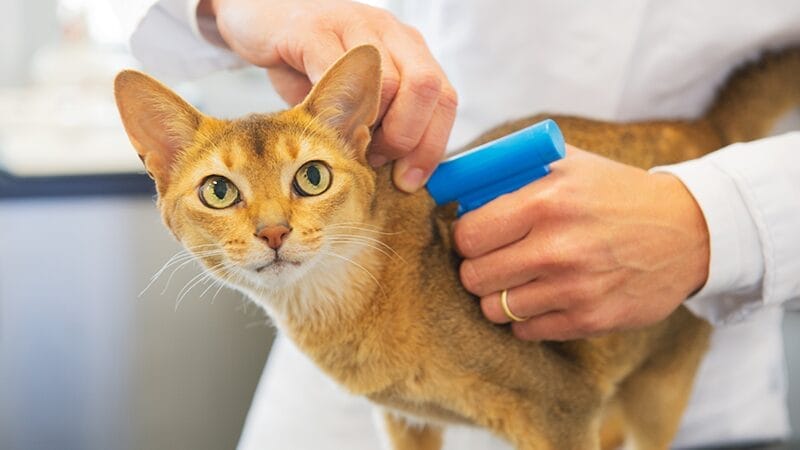
Reunite with Your Lost Pet: Proven Identification Methods
Millions of U.S. pets get lost yearly. Increase the chance of reuniting with your pet by ensuring they have pet identification.
Millions of pets get lost every year in the United States. Fortunately, there are several ways to increase the chances of being reunited with your pet. Ensuring your pet has proper identification is essential, and combining different methods provides the best results.
The Importance of Pet Identification
According to the American Humane Society, approximately 10 million pets are lost each year. This can happen to any pet owner, regardless of how vigilant they are. Pets can get lost when they escape from their collars, get off-leash, or slip out of their homes, crates, or yards. To minimize the risk of losing your pet and maximize the chances of reunion, it’s essential to use multiple identification methods.
ID Tags for Pet Identification
The simplest way for someone to contact you if they find your lost pet is by looking at the pet’s collar and ID tags. Ensure the tag includes:
- Your pet’s name
- One or two phone numbers (with area code)
- City and state or complete address
- Optional information like “I’m microchipped” or “I’m deaf”
The collar should also have a current rabies tag and your county/city license, indicating your pet is not a stray and is up to date on vaccinations.
There are several types of ID tags available:
- Engraved ID Tags: These are widely available and can include your pet’s name, your name, and contact information. However, the engraving may wear off over time.
- Personalized Collars: These can be customized with your pet’s name and your contact information.
- Smart ID Tags: These digital tags can be scanned using a smartphone, displaying an online profile with your pet’s information. This method allows you to include additional details such as extra contact details or health information. Importantly, smart ID tags can be scanned by anyone with a smartphone without the need to download an app or visit a veterinarian or shelter.

Microchipping for Pet Identification
Microchipping is a highly effective method of permanent identification. The benefits of microchips include:
- Permanence: Microchips cannot be lost or tampered with.
- Effectiveness: Studies have shown that microchipped pets are more likely to be reunited with their owners. For example, dogs with microchips are reunited with their owners 52% of the time, compared to 22% without microchips.
Here’s how microchipping works:
- A veterinarian injects a small microchip, roughly the size of a grain of rice, under your pet’s skin between the shoulder blades. This quick and relatively painless procedure feels like receiving a shot. No ongoing maintenance is required for the microchip; however, ask your veterinarian to check the chip during your pet’s annual checkup to verify that it’s still in place and functioning correctly.
- The microchip contains a unique identification number linked to your contact information in a database.
- When a shelter or veterinarian scans your pet, they use this number to find your contact information.
While microchips are highly effective, they do require registration and updating your contact information if you move or change your phone number. You can use the American Animal Hospital Association’s Microchip Registry Lookup Tool to find the company your pet’s microchip is registered with so you can determine what company you need to contact to update your pet’s information.
If you don’t have a record of your pet’s microchip number, you can take them to the nearest animal hospital or pet shelter and ask them to scan your pet for a microchip. For more information on microchipping, read the American Veterinary Medical Association’s Microchipping FAQ.

Combining ID Tags and Microchips
Using both ID tags (including smart ID tags) and microchips provides the best chance of being reunited with your pet. ID tags offer immediate visibility, while microchips serve as a reliable and permanent backup. Smart ID tags enhance this by providing easily accessible, detailed information about your pet.
To maximize your pet’s safety:
- Use a combination of physical ID tags, smart ID tags, and microchipping.
- Keep your contact information updated on all identification methods.
- Regularly check the condition and legibility of your pet’s ID tags.
By taking these steps, you can significantly increase the chances of being reunited with your pet if they ever become lost.
Visit our Pet Care Resources library for more pet health and safety information.
FAQs
What identification should my pet have?
What kind of identification is best for my pet?
What should I do if I find a lost pet?
Learn More
For ways to ensure your pet lives a happier, healthier life, visit our Pet Care Resources library.
Pet Care ResourcesContents
Learn More
For ways to ensure your pet lives a happier, healthier life, visit our Pet Care Resources library.
Pet Care Resources

